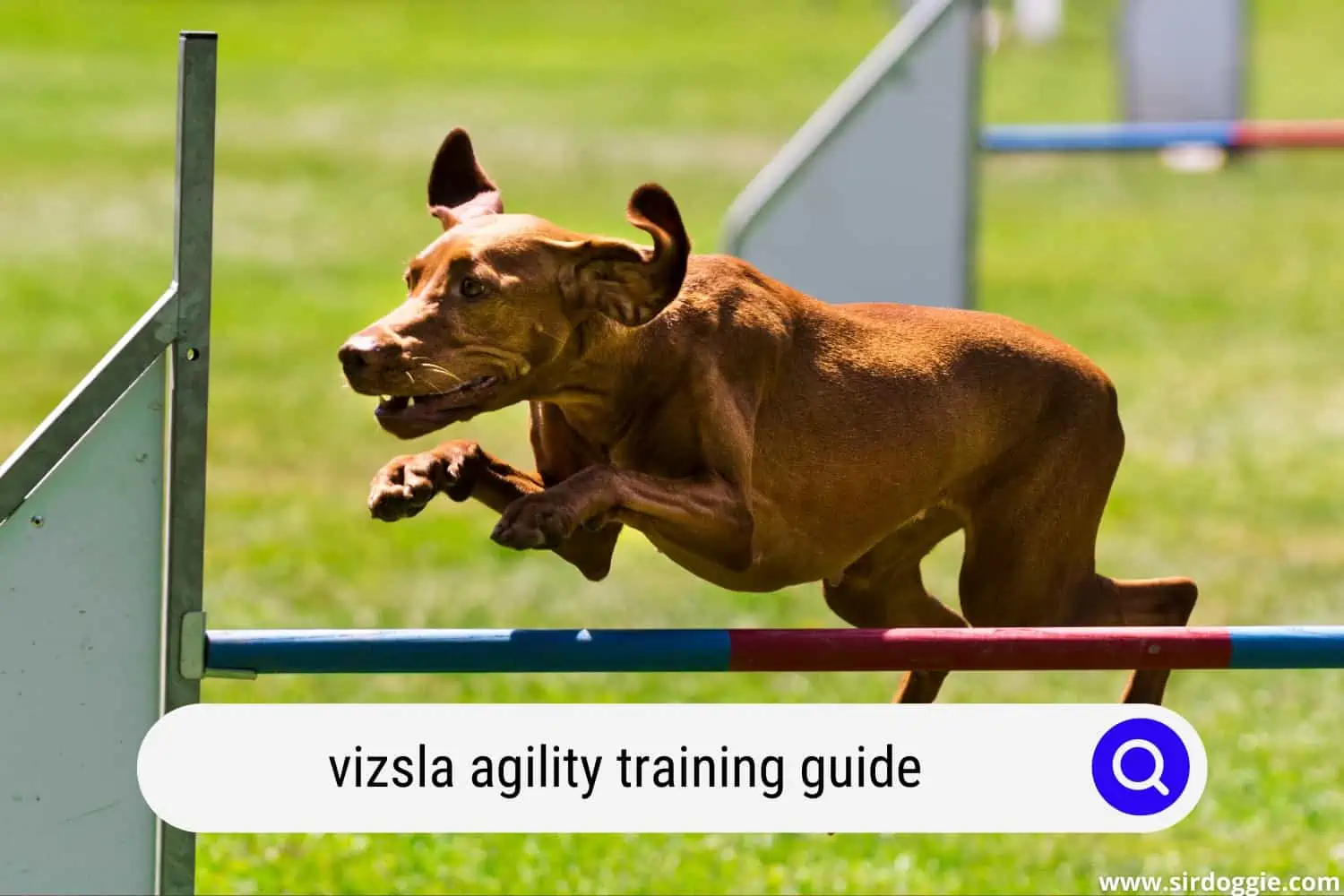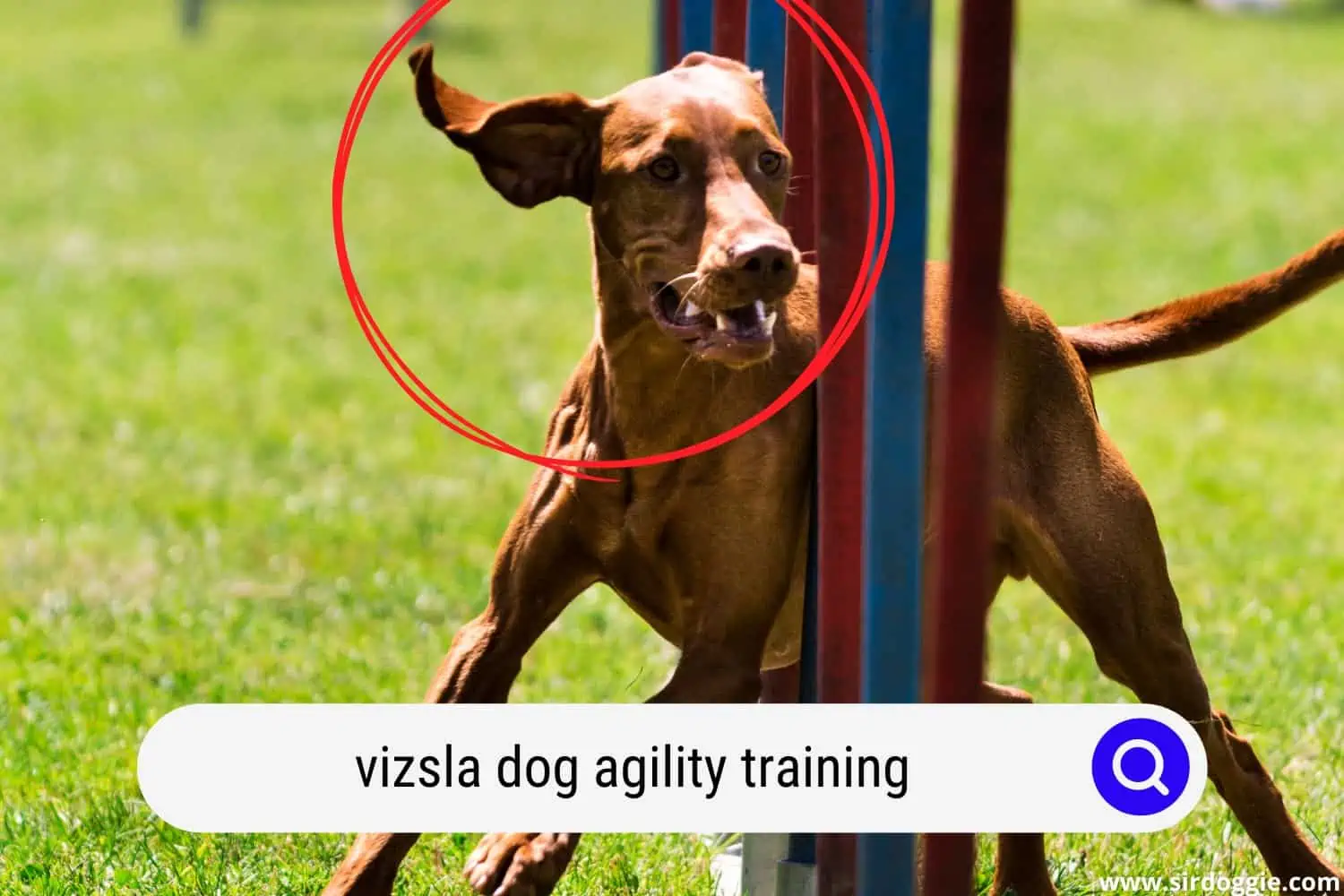Vizsla Agility Training Guide
The Vizsla breed dog is desired both by hunters and many families for being a versatile animal. This canine is always full of energy, so if you have a Vizsla at home, you will never be bored or lonely.

This precious animal is very intelligent, affectionate, playful, gentle, and incredibly agile. If you are a Vizsla dog owner, you should be familiar with the strenuous exercise and training that comes with owning a Vizsla dog. It is for this reason that many people are not qualified to own a pet like this since they require a lot of time to exercise daily.
Is My Vizsla Good at Agility?
Before talking about whether Vizsla is good at agility or not, it’s essential to know what canine agility training refers to.
Dog agility training is a fantastic and efficient way to exercise your beloved pet’s body and mind. It consists of a sports program where the animals can train and learn to perform many maneuvers and tricks.
While all dogs benefit from this type of dual exercise, Vizsla canines, in particular, thrive when given plenty of physical activity and the opportunity to stimulate themselves mentally.
Vizsla dogs are extremely good at agility thanks to their experience as hunting animals. Their high endurance, trainability, and graceful movements make these pets perfectly suited for agility.
Is Agility Considered a Sport?
Agility is a physically demanding sporting skill in which the trainer or handler uses cues and body language to guide the Vizsla dog through a predetermined course that generally consists of 14 to 20 obstacles.
The goal of this is to complete the tour without failures as quickly as possible. In addition, this discipline allows us to test the skills of the dogs.
Agility training for My Vizsla
First of all, before starting agility training for your pet, it is important that you take many things into account:
1. Canine Trainer
You have to find a good trainer to train your Vizsla. You should research recommended and trained instructors for agility training before committing to your goal.
2. Basic Commands
It is not necessarily mandatory that your pet knows basic commands to start training. However, it would be very useful since, in agility training, it is necessary for the dog to be focused at all times and, at the same time, know how to obey the commands given by its owner or trainer.
Some of the most used commands are: “come”, “sit down”, “stay”, “wait”, “go”, and so on.
3. Dog’s Age
Agility training can start at any age. Many Vizsla dogs have started training since they are puppies. That is, from 10 months.
Initially, much of this training has to do with focus, obedience, intuition, and learning directions, which are the agility building blocks.
It should be noted that to protect your developing Vizsla’s muscular-skeletal system, a good trainer will not require a puppy of this breed to perform complicated tricks until it is about a year old and has mastered all the basic commands and tricks.
4. Canine Health
One of the most critical factors in agility training for a Vizsla is health. The longer this canine is healthy and in good shape, the more likely it is to show off in agility practice.
Most organizations require dogs to be around 18 months of age before they are eligible to compete. That is because puppies have soft bones and open growth plates that can be easily damaged by repetitive and jarring actions such as jumping.
The good news is that even if your Vizsla pet is still a puppy, it can begin pre-agility training right away. Basic obedience training can be started at 8 weeks of age.
When and How Can My Vizsla Dog Start Agility Training?
Once your Vizsla dog has mastered the basic commands well, you can start training your pet in basic exercises.
- Use short tunnels. Through these tunnels, it will be able to crawl into them if taught correctly.
- Teach it how to “aim.” That means your Vizsla will have to touch an object in the specific area indicated by the trainer.
- Get it to walk around poles placed vertically in the ground. Its trainer can teach you how to zigzag between these poles.
- Show it how to jump through a tire placed upright on the ground.
- Help it walk on slightly elevated boards or seesaws.
Dogs that have passed their first birthday may begin to practice more complicated maneuvers such as pole weaving and jumping jacks. Gradually increase the difficulty of obstacles and height of jumps as your Vizsla’s skill level increases.
Some of the most effective ways to train a Vizsla dog are:
Positivism
Agility training for Vizslas is an opportunity to enjoy and learn together with your pet, so it is essential to use positive reinforcement. With treats and caresses, learning will flow better, and your pet will feel more motivated.
Do Not Put a Collar on Your Pet during Training
Practicing agility with a collar is extremely dangerous for your Vizsla, as it could get caught in some of the obstacles and injure itself. Therefore, you must make sure that the animal does not wear a collar when training, not even the antiparasitic collars.
Patience
If your Vizsla gets frustrated during training, it will not enjoy the game and will lose motivation. Therefore, you have to be patient and make it easy for your pet at the beginning.

Keys to properly Training Your Vizsla Dog’s Agility
Keeping training sessions lively, short, and fun is an excellent way to help your Vizsla learn more easily. It is also important to reward your efforts with croquettes.
Do not forget to apply the basic commands and body language, as these aspects are essential to reinforce your Vizsla’s agility training.
Related Reading: 4 Best Agility Training Equipment for Dogs

Family Dog Expert Author
Hi there! I’m Stuart, a devoted dog lover and family dog expert with over a decade of experience working with our furry companions. My passion for dogs drives me to share my knowledge and expertise, helping families build strong, loving bonds with their four-legged friends. When I’m not writing for SirDoggie, you’ll find me hiking, playing with my beautiful dog, or studying music.